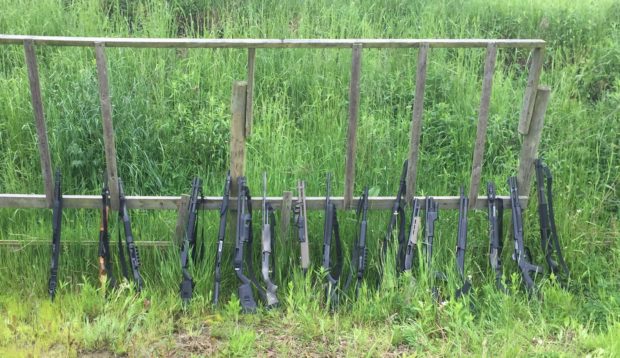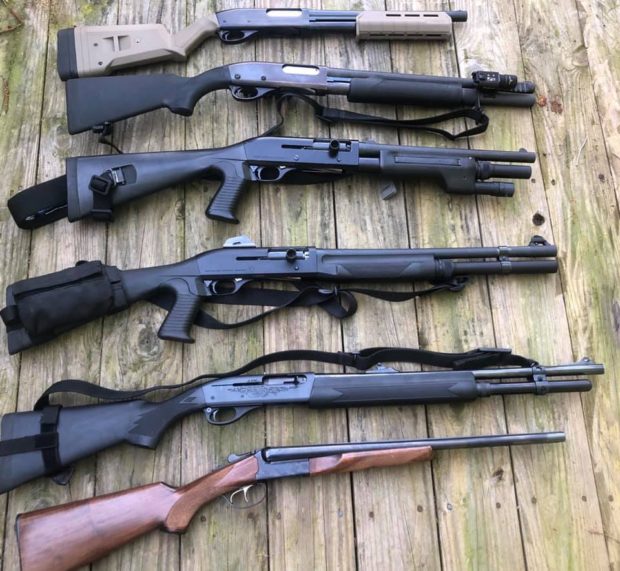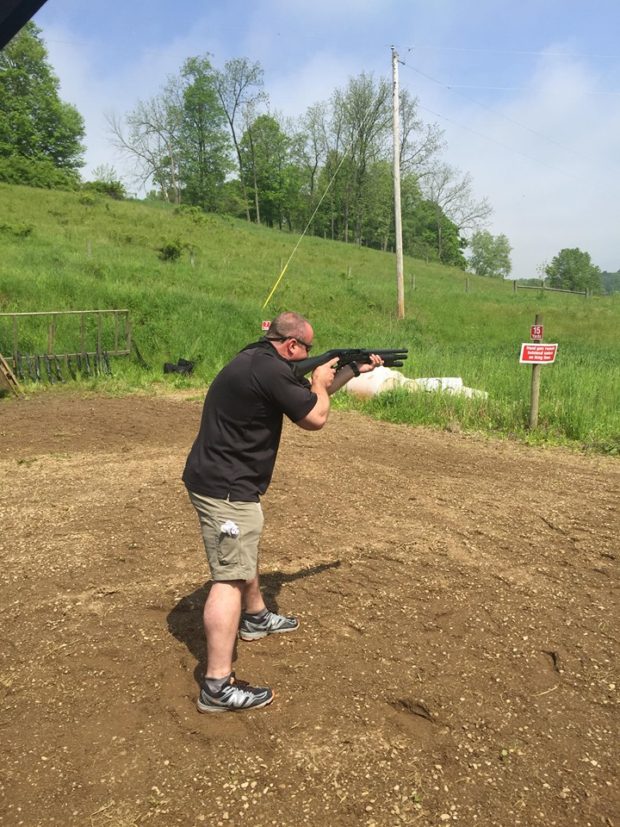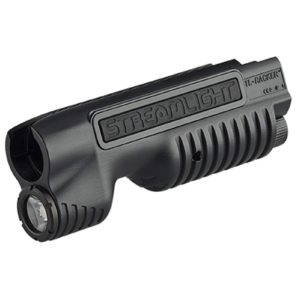Written by: Greg Ellifritz
Last Saturday, I taught Active Response Training’s very first open enrollment shotgun course. It’s kind of odd that I’ve never done one, considering that the very first firearms instructor certification I got was Phil Singelton’s Benelli shotgun instructor class. I’ve been teaching cops how to shoot shotguns since the year 2000 and I taught numerous TDI shotgun classes over the years, but this is the first one I’ve ever done through my company. I’ll be doing more. I like the shotgun.
Here are some gun, gear, and training issues I saw in class…
Mostly pump guns- Only three semi-autos out of 14 students. That’s bucking the trend that I’ve been seeing in recent years. In most shotgun classes we tend to see more semi-autos than pumps. Either system will work fine if the shooter is well trained.
For autos, we had a Mossberg 930 Tactical, a police trade Beretta 1201, and a Remington 1100 in 20 gauge. All functioned well.
As for the pumps, we had a couple Mossberg 500s and a couple Mossberg 590s. All the rest were Remington 870s of some type.

Class guns
No guns broke- I found this fact very odd. It’s been my experience in nearly every shotgun class I’ve instructed, we’ve had one or more broken guns. Not this one. Everything ran fine. I emptied out my gun safe and brought spares just in case. Luckily I didn’t have to break any of them out.

The guns I brought to class to serve as loaners in the event of a gun breakage.
During one of the rolling thunder drills I did, we had one gun go down temporarily. It was a police trade-in Remington 870. A spent shell was stuck in the chamber and the student couldn’t pump the gun. It provided an excellent opportunity to teach the class about “mortaring.” I don’t get to cover that very often.
Streamlight forend- We had one of the new Streamlight TL Racker forend lights. These just came out and I had never seen one in person. The light is about 1/3 of the price of its SureFire counterpart. No problems at all with it in class. The forend functioned well and the light still worked at the end of about 150 rounds fired. I purchased one and will be installing it on my SBS 870.
We only had one other student with a light. He used a Fenix handheld light mounted to his forend with a tape switch activation system. It held up well and still worked at the end of the class as well. They system isn’t as cool as an integrated forend light, but it is much cheaper and serves the same role.
Plugs- When we got to the point in class where we began shooting longer strings of fire, two of the students were surprised to find that their Mossberg 500 shotguns still had the factory wooden magazine plugs installed and would only hold three rounds. While I have Remington, Benelli, and Beretta shotgun armorer certifications, I had no idea how to remove the Mossberg plugs.
Some simple googling solved the problem. If you have a plugged Mossberg shotgun, remove the barrel attachment nut, turn the gun upside down and shake it. The plug will fall out of the end of the magazine tube. I learn something new in every class I teach.
Only one optic- Red dot optics on shotgun are a new trend as well. There was only one optic in this class. It was a Sig Romeo red dot. The shooter didn’t have any problems with it. The optic kept its zero and was still functioning well after 150 rounds. I have one of these optics on a beater AK and it has worked fine for me. I’m glad to see that it also withstands the heavier shotgun recoil as well.
Weak sided shotgun shooting- This was the first time many of the students had ever fired a shotgun from their weak-side shoulder. They were surprised at the awkwardness of handling the shotgun that way. They also had issues with eye dominance. With long guns, you have to see the sights (or bead) with the eye on the same side of your face as your cheek weld. For many shooters this was their non-dominant eye. Several had to close their dominant eye to allow a proper sight picture with the non-dominant eye.
I had students fire a magazine of slow familiarization fire from the weak side shoulder and then had them transitioning from strong to weak side and firing. Give it a try. This is a critical skill to master in the event of an injury to your strong side gun arm.
Basic assumptions- I taught a select slug drill. Some of the students were really having problems getting it. My select slug drill for pump shotguns is super easy.
- Work pump.
- Load slug into magazine.
- Work pump.
That’s it. Now you have a slug in the chamber.
I’d never had a problem teaching that particular technique in prior classes. These folks were having problems even though I broke it down and gave them individual range commands, walking them step by step through the process.
After the drill was done, I pulled everyone together and asked them what wasn’t clear and asked how I could explain the drill so more people would get it.
They finally told me what the problem was. Three of the students did not know that the last round loaded into a shotgun magazine was the first to be chambered.
Without thinking about the issue, they just assumed that the first round loaded in the mag would be the first round chambered. They were jacking out all their shells trying to get to the slug they put in “last.”
These guys weren’t dumb. They just never had anyone explain to them how a tubular magazine worked. Once they realized the the round they were stuffing in the tube would be the next round chambered, everything suddenly made sense.
I will remember to never assume even the most basic of mechanical gun knowledge in my future classes.

Demonstrating proper shotgun shooting body posture
I look forward to teaching more “gospel of the gauge” in the future.
Some of the above links (from Amazon.com) are affiliate links. If you purchase these items, I get a small percentage of the sale at no extra cost to you.


